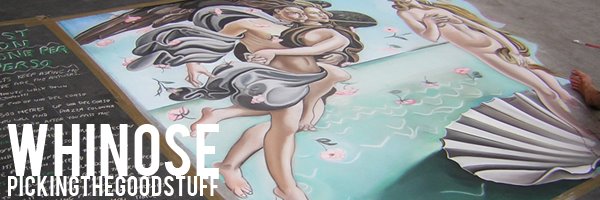Pasen, de wederopstanding. Palmtakken en broodkippen. Bovenal staat het voor verdraagzaamheid en genegenheid naar eenieder die jij liefhebt. We leven te snel tegenwoordig, waarderen het kleine niet meer en winden ons op om de domste dingen. Moet dat nou?
Stichting SIRE begon vorig jaar een campagne tegen de ontluikende agressie van de Nederlandse samenleving. Je hebt er vast wel eens van gehoord, het korte lontje in ons landje. Het is terecht dat hier aandacht aan geschonken wordt, want je zou haast zeggen dat je tegenwoordig het incasseringsvermogen van een professioneel bokser moet hebben om je niet te ergeren aan van alles en nog wat. Dan komt de trein te laat, dan rijdt de bus niet, dan is het winkelpersoneel grof, dan word je nageroepen op straat..
Gandhi zei ooit; “Een zwakkeling kan niet vergeven. Vergevingsgezindheid is een eigenschap van sterkte.” Maak je niet zo druk, wees niet die zwakkeling. Er schuilt een bokser in ieder van jullie, en enkelen zijn haast zo groots als Mohammed Ali was. Qua vergevingsgezindheid dan.
Uit de nieuwjaarsenquête van Editie NL bleek dat de gemiddelde Nederlander voor 2008 vooral als wens had meer te gaan genieten van het leven. Mijn vraag aan jullie is: doen jullie dat ook? Zo nee, sta er eens wat vaker bij stil. Ook al heb je zoveel nare dingen meegemaakt in je leven, er zijn zoveel lichtpuntjes te ontdekken dat je daar vanzelf weer blij van wordt. Het leven is mooi.
Gelukkig geloven een hoop mensen in hem, in zijn religie. Gelukkig zijn zij bereid het goede te doen en het slechte te laten. Als heel de wereld dat eens zou doen..
Pasen is ook een moment van bezinning, een mooi rustpunt in een studiejaar of een werkperiode. Zet voor jezelf nou eens op een rijtje waar je heen wil met je leven. Wil je hamburgers bakken? Wil je carrière maken in het bankwezen? Wil je deze studie afmaken? Volg je hart, dat is wat telt.
Lach eens wat vaker. Om jezelf, om situaties, om anderen als je weet dat die anderen er geen problemen mee hebben. De profeet Mohammed vertelde aan Aboe Dzarr dat hij het lachen erg hoog in achting hield; “Onderschat niet de minste van de goede werken, al is het maar het glimlachen naar je broeder wanneer je hem tegenkomt.”
Probeer je niet te ergeren aan de kleine dingen, maar lach er een keer om en vergeet het daarna. Niets is zo vervelend als van een mug een olifant maken, voor jezelf en voor anderen.
Het was niet mijn bedoeling om als een welbespraakte Greenpeace-liefhebber over te komen. Het was ook niet opzettelijk mijn bedoeling om zo’n clichématig stuk tekst te schrijven. Het was mijn bedoeling om jullie aan het denken te zetten. Over jezelf, over anderen, over het leven in het algemeen. Wat wil je bereiken? Geniet vooral, dat is wat ik wil meegeven. Geniet, en zorg voor anderen. Je bent gezegend met dit leven.
Zalig Pasen.






